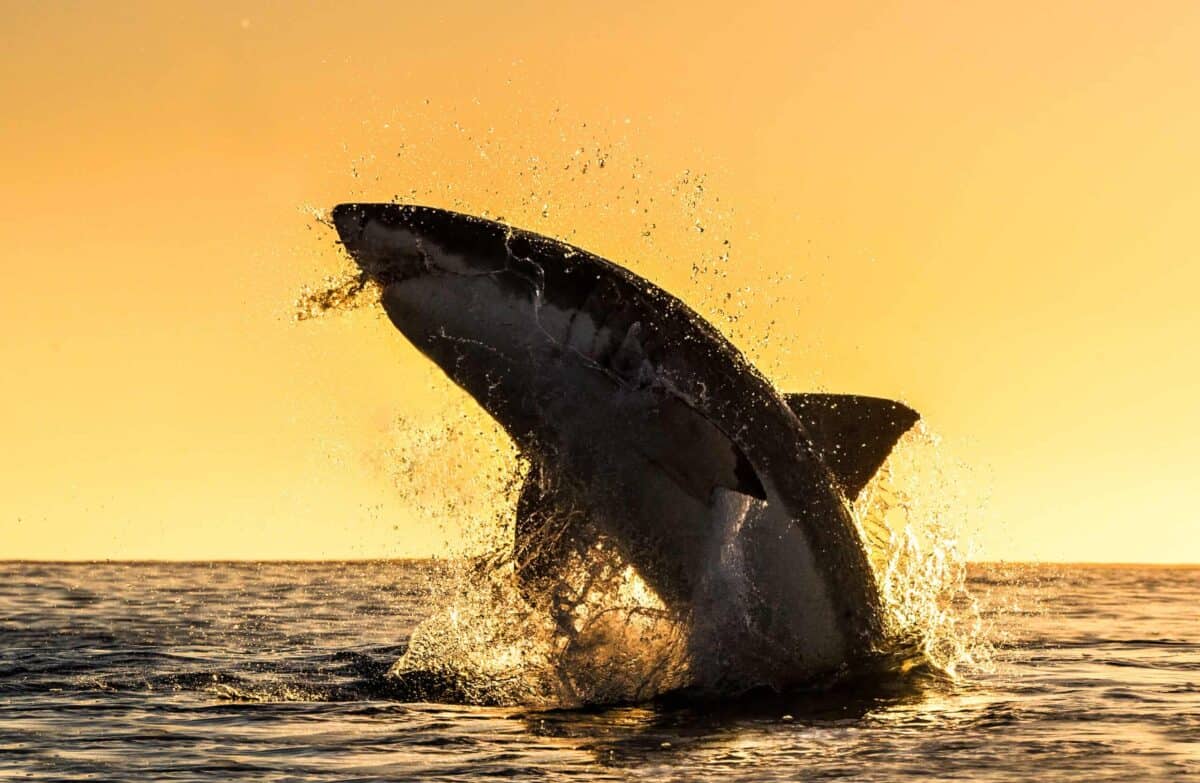The majestic great white shark, a creature that has long captivated the human imagination, is experiencing a remarkable change. In recent years, researchers have observed that these apex predators are growing larger than ever before. This phenomenon has sparked curiosity and concern among scientists, conservationists, and the general public alike. Why are great white sharks getting bigger? What does this mean for the ocean’s ecosystems? Let’s dive into this fascinating topic, exploring the intricacies of great white shark growth and the various factors influencing their increasing size.
Understanding Great White Sharks

Great white sharks (Carcharodon carcharias) are among the most powerful predators in the ocean. They are known for their size, strength, and agility. These sharks have a distinct white underbelly, which contrasts with their grey dorsal surface, making them highly recognizable. On average, adult great white sharks can reach lengths of 15 to 20 feet, although there have been unverified reports of individuals exceeding 20 feet in length.
The Significance of Size

In the animal kingdom, size often correlates with dominance and survival. For great white sharks, being larger means having an advantage in hunting and defending territory. A bigger size also offers better insulation in colder waters, expanding their range of habitats. Thus, understanding the factors that contribute to their increased size can provide insight into their survival strategies and adaptation mechanisms.
Genetic Factors

Genetic makeup plays a crucial role in determining the size of great white sharks. Like all creatures, variations in genetic sequences can lead to differences in physical characteristics, including size. Some researchers speculate that we may be witnessing a shift in the genetic composition of the great white shark population, favoring larger sizes. However, more research is needed to fully understand these genetic influences.
Availability of Prey

Availability and abundance of prey are critical for the growth of great white sharks. As apex predators, they require a substantial amount of food to support their large size. Increases in populations of marine mammals, such as seals and sea lions, provide ample food sources for these sharks, potentially contributing to their growth.
Changes in Ocean Temperature

Climate change and the resulting shifts in ocean temperatures might also be affecting great white shark size. Warmer waters could influence the distribution of prey species, making food sources more readily available in certain areas, facilitating greater growth. Additionally, temperature can directly impact metabolism rates in sharks, potentially leading to increased growth rates.
Reduced Competition

As top predators, great white sharks have few natural enemies. However, human activities such as fishing have historically reduced the numbers of other large marine competitors. This reduction in competition for food may allow great white sharks to consume more and grow larger.
Conservation Efforts

Increased conservation efforts and legal protections for great white sharks may also contribute to their growing sizes. With bans on great white shark hunting and improved ocean health policies, these sharks are living longer and healthier lives, giving them more time to grow.
Improved Research and Monitoring Techniques

Advancements in marine biology and technology have allowed researchers to gather more accurate data on great white sharks. Improved tracking devices and data analysis methods are providing new insights into their growth patterns, possibly leading to a revision of our understanding of their average size.
Marine Pollution

While generally seen as a threat to marine life, in some instances, pollution can contribute to the availability of prey species by creating artificial reefs that attract fish. However, the long-term effects of pollution on great white shark size remain uncertain and are a subject of ongoing research.
Longevity

Great white sharks can live up to 70 years. This long lifespan, combined with fewer threats from predators and human activities, provides a substantial window for growing. Sharks that live longer have more opportunity to reach and surpass previously recorded size benchmarks.
Social Structure and Territory

Great white sharks have complex social structures and territorial behaviors. Larger sharks often dominate the best hunting grounds, gaining access to more food resources. This social hierarchy can directly influence growth, as dominant individuals grow larger due to better feeding opportunities.
Impact on Ecosystems

The increasing size of great white sharks can have significant impacts on marine ecosystems. As these predators grow larger, their hunting patterns, prey selection, and territorial ranges may change, potentially leading to shifts in the balance of marine communities.
Conclusion

The growing size of great white sharks is a multifaceted phenomenon that highlights the intricate balance of marine ecosystems. While the reasons behind this trend are complex and varied, including genetic factors, changes in prey availability, and environmental shifts, it is clear that these magnificent creatures continue to adapt and thrive in the oceans. As research progresses, it is essential to continue monitoring these changes to understand their full implications for marine biodiversity and ecosystem health. The great white shark, with its increasing size and majestic presence, remains a symbol of the ocean’s untamed wilderness and the need for its conservation.
- These Animals Show Unbelievable Human-Like Emotions - August 21, 2025
- Texas Is Home to the Fastest Land Animal in North America, and It’s Not What You Think - August 21, 2025
- Why Great White Sharks Are Getting Bigger Than Ever - August 21, 2025

